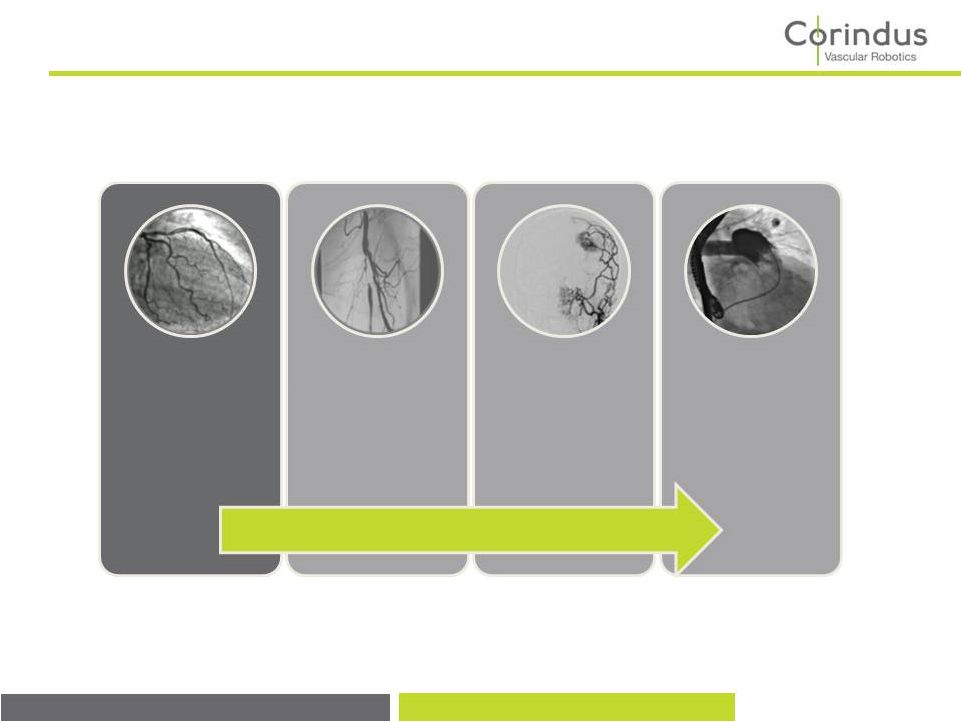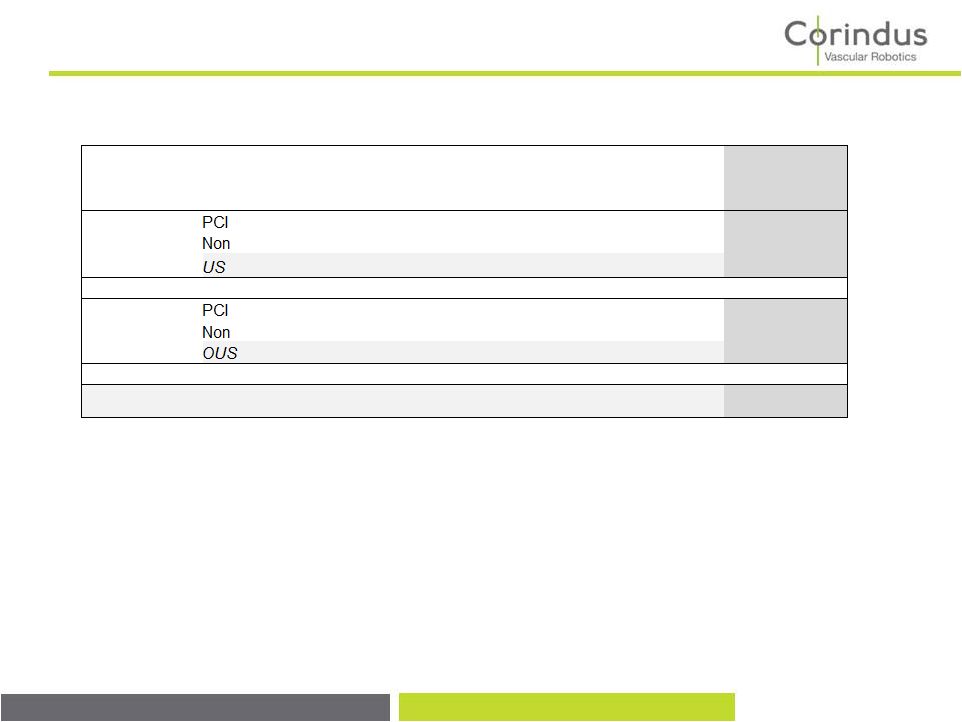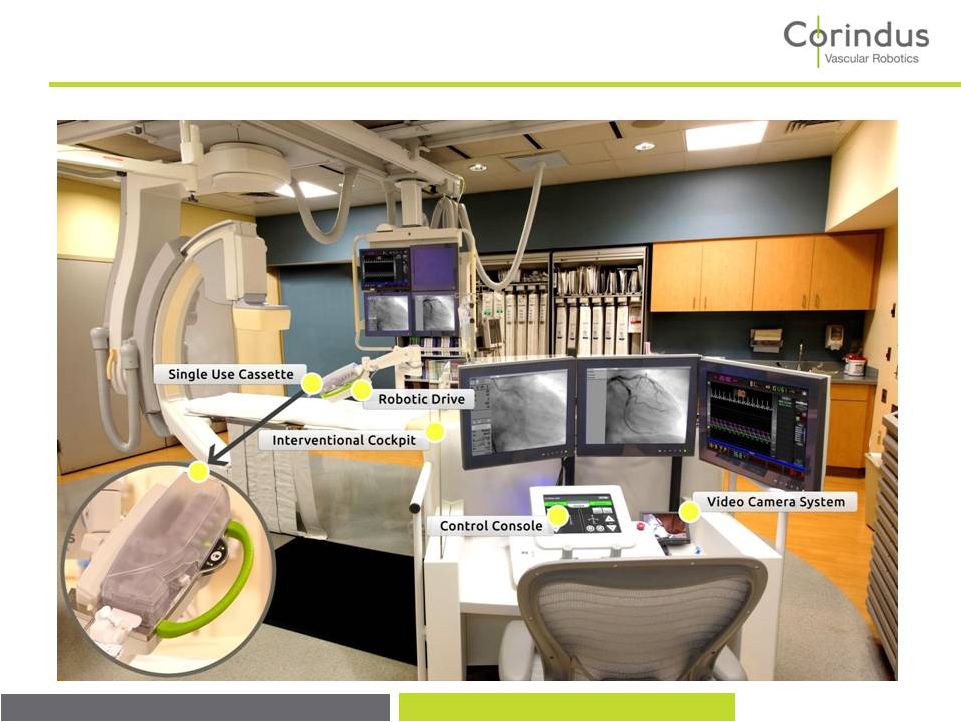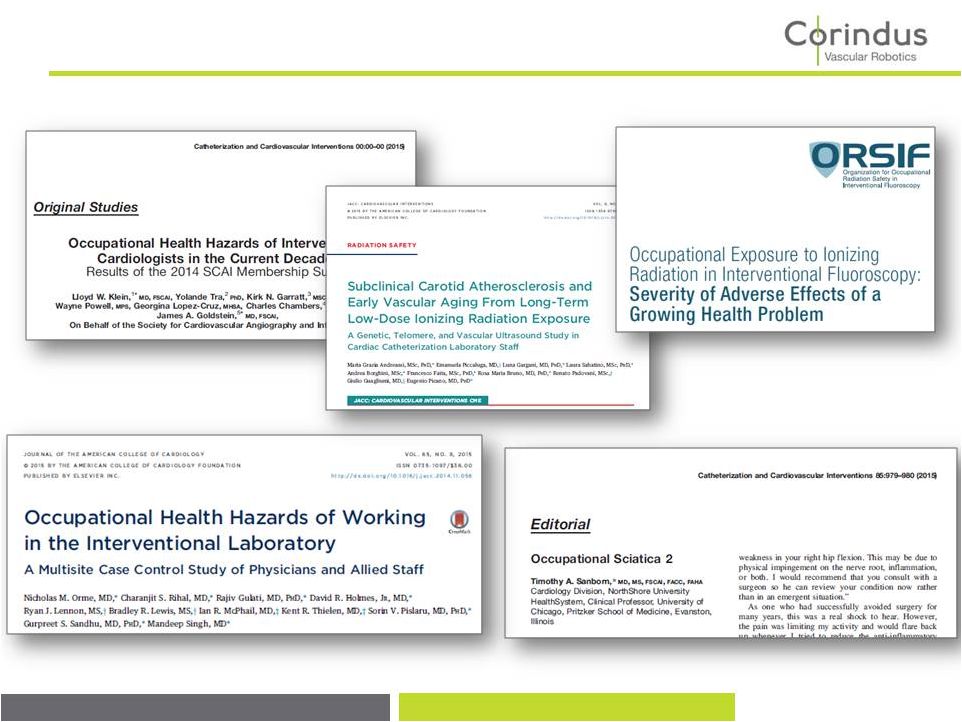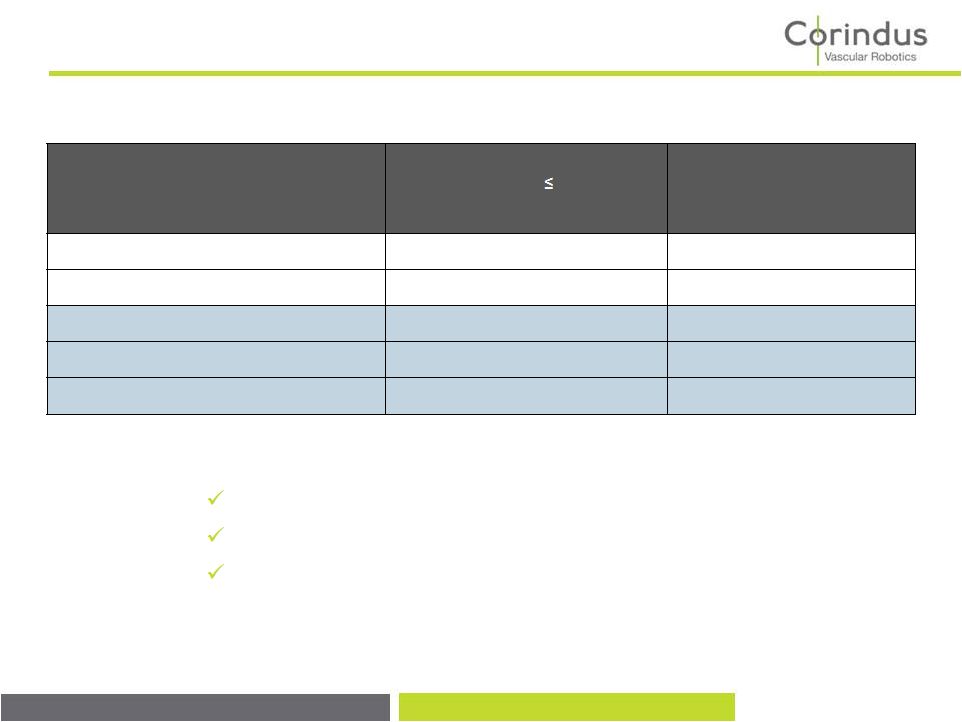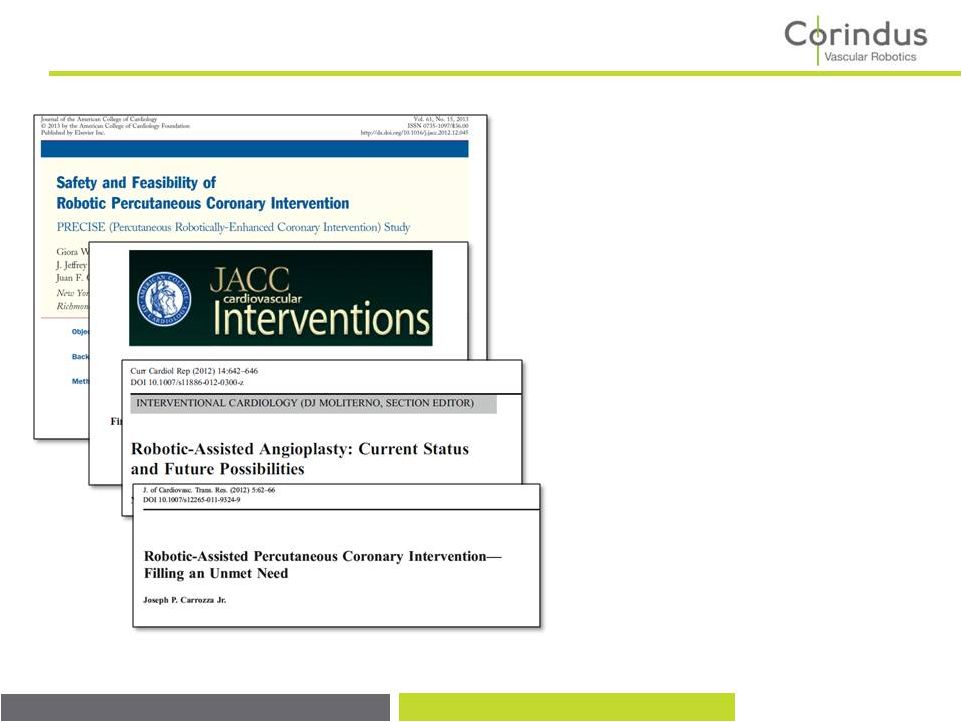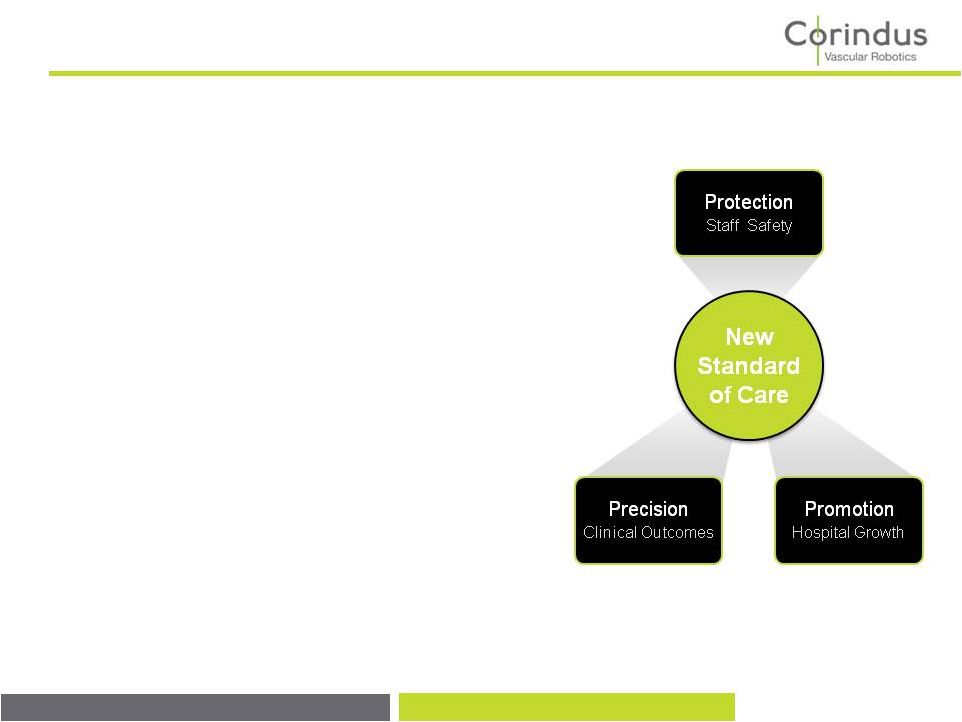• Inaccurate lesion assessment – ~65% physicians select stent length based on visual estimation alone 1 – 51% of physicians underestimated lesion length 2 – Inaccurate estimate lead to sub-optimal PCI procedure and can cause LGM • Longitudinal Geographic Miss (LGM) correlates with higher TVR – STLLR trial demonstrated high incidence of LGM 3 • Published Journal American College of Cardiology; • 1,557 patients, 41 US hospitals; 1 year follow up – 47.6%* of patients had LGM stent placements – LGM leads to 2.3x incidence of TVR 16 1 65% according to an online survey, Junicon market research 2012 – 113 interventional cardiologists. Study sponsored by Corindus Inc. 2 Campbell, P. T et al (2015), Interoperator and intraoperator (in)accuracy of stent selection based on visual estimation. Catheterization and Cardiovascular Intervention. doi: 10.1002/ccd.2578 , Study sponsored by Corindus Inc. 3 Costa M., et al. Impact of Stent Deployment Procedural Factors on Long-Term Effectiveness and Safety of Sirolimus-Eluting Stents. Am J Cardiol, 101(12):1704-11 2008 *Analyzable data set included 1419 patients (required LGM and AGM data) Precision Matters in PCI How does precision impact patients? Longitudinal Geographic Miss (LGM) Target Vessel Revascularization (“TVR”) = Repeat PCI or worse! (increased patient risk and cost implications) | 




